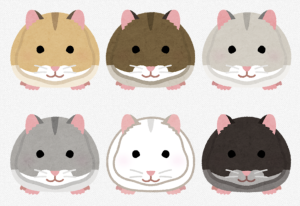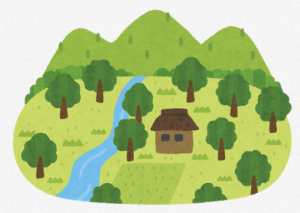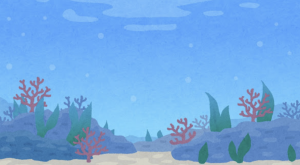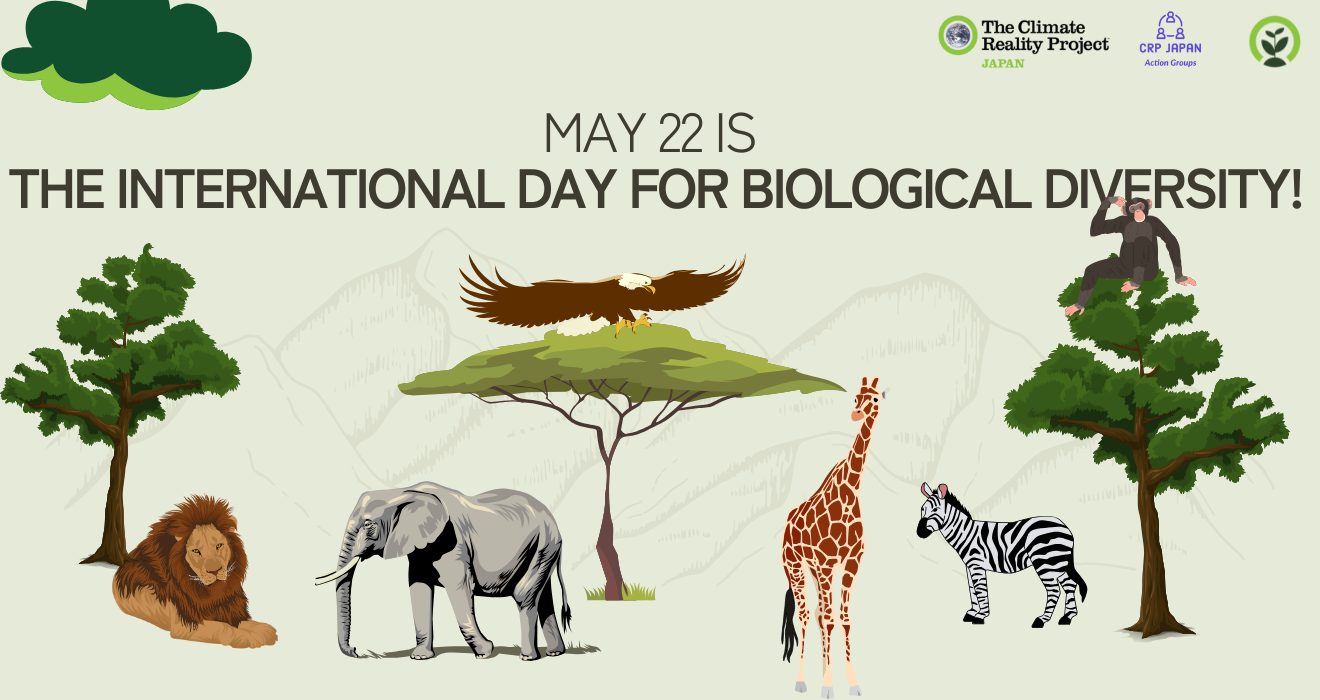NEWS
2025.05.22
NEWS
【2025/5/22】CRP Japan’s “Biodiversity Action Group” has launched a new column series!
To mark the International Day for Biological Diversity, we’re excited to launch a new column series by the Biodiversity Action Group! Today, we’re sharing the first installment of the series.
Biodiversity Group – Column Vol.1
“How is Biodiversity Connected to the Climate Crisis?”
What does biodiversity have to do with the climate crisis?
Hi there! We’re the Biodiversity Action Group.
When taking action on the climate crisis, have you ever thought about how biodiversity fits in?
The truth is, protecting biodiversity is just as important as tackling the climate crisis itself. Through this new column series, we’ll be sharing why biodiversity matters — and how it’s deeply connected to climate solutions.
We look forward to exploring these important links with you!
What is biodiversity?
First of all, what does “biodiversity” actually mean?
Over the Earth’s 4.6-billion-year history, an estimated 30 million species have emerged and evolved — from microscopic bacteria to towering forests and majestic whales. Each of these living beings has coexisted by being part of a vast, interconnected web, supporting and depending on one another¹. It’s as if nature itself understands the importance of connection and mutual recognition.
This intricate web of life — where all living things are interlinked — is what we call biodiversity. And we humans are no exception. We, too, live within and benefit from this biodiversity every day. In fact, it’s said that nearly half of the world’s GDP depends on healthy natural ecosystems.²
On the flip side, the loss or decline of a single species doesn’t happen in isolation — it creates ripple effects that impact other species in the web, including us humans.
So, let’s take a closer look at what biodiversity is made of.
Biodiversity consists of three levels:¹
-
Species Diversity
It’s estimated that around 30 million different species of animals, insects, plants, and more exist on Earth today. The greater the number of species in an ecosystem, the more resilient and robust that ecosystem tends to be.

-
Genetic Diversity
Even within a single species, individuals carry a wide variety of genetic traits. This diversity helps species adapt to changes in their environment and can protect them from threats such as disease or climate stress.

-
Ecosystem Diversity
Across the planet, countless ecosystems have developed in response to different landscapes and climates — from rainforests and deserts to oceans and wetlands. These ecosystems are interconnected and work in balance to support life and bring richness to our planet.


Our Lives Depend on Biodiversity
As part of the Earth’s ecosystems, we humans rely on biodiversity in countless ways.
Biodiversity produces the oxygen we breathe, enriches soil and oceans, stabilizes the climate, and provides us with food, materials, and medicine. Even our physical and mental well-being is supported by the health of the natural world.
Biodiversity and the Climate Crisis: Deeply Connected
So, how exactly is biodiversity connected to the climate crisis?
-
How the climate crisis affects biodiversity
Rising temperatures and extreme weather disrupt ecosystems on both land and sea — from forests to coral reefs. These changes reduce habitat availability and increase the risk of extinction for many species. As ecosystems break down, the impacts inevitably ripple into human life and livelihoods.
-
How biodiversity loss worsens the climate crisis
Forests and the soil beneath them play a crucial role in absorbing and storing carbon dioxide. When these ecosystems are destroyed, greenhouse gases accumulate in the atmosphere, driving global warming. Similarly, oceans and algae act as major carbon sinks — but rising ocean temperatures can trigger heavy rainfall and other climate disruptions.
A World Losing Its Biodiversity
Right now, biodiversity is disappearing at an unprecedented rate.
According to the IUCN Red List of Threatened Species, over 46,300 species are currently at risk of extinction.³ The leading causes? Human activity — including climate change, population growth, the expansion of farmland and pastureland, overfishing, urban development, and industrial exploitation of natural areas.
Protecting Biodiversity Is Climate Action
Has your understanding of biodiversity grown a little deeper?
We hope it’s now clear that protecting biodiversity is not separate from solving the climate crisis — it’s a key part of it. And it affects our health more than we might realize.
That’s why we encourage you to share this message with others and put it into practice in everyday life.
For example:
・Planting greenery on your balcony or in your garden helps absorb CO₂ and creates a small habitat for insects and birds.
・Reducing your use of disposable plastics protects marine and land-based species from harm.
Every small action adds up. Protecting biodiversity is part of the path toward a livable future — and each of us has a role to play. In our next column, we’ll share real-world examples of how biodiversity and climate are connected.
★References and Resources
1. Ministry of the Environment, Japan – Biodiversity
https://www.biodic.go.jp/biodiversity/index.html<
2. United Nations Climate Action – Biodiversity: Our strongest natural defense against climate change https://www.un.org/en/climatechange/science/climate-issues/biodiversity<
3. IUCN Red List of Threatened Species
https://www.iucnredlist.org<
Author: Tomoaki Ota (Biodiversity Action Group), CRP Japan

